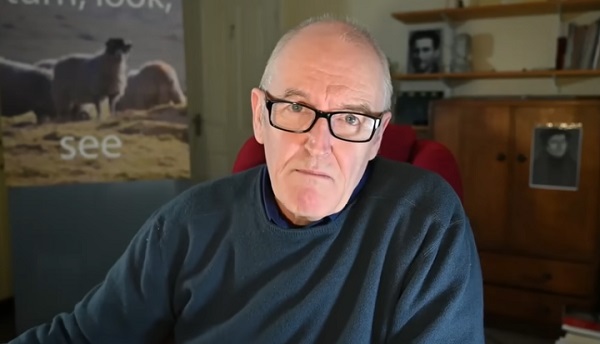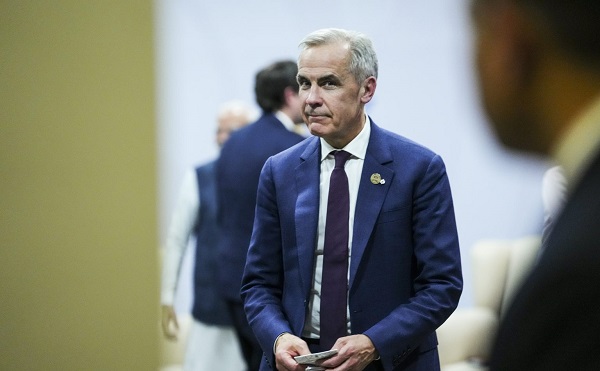International
US fertility rates drop to historic low as young adults choose against having children

From LifeSiteNews
Survey participants cited not finding the right partner, a desire to ‘focus on other things,’ ‘the environment,’ and ‘financial concerns’ among their reasons for deciding against having children.
A new Pew Research Center study found that the U.S. fertility rate reached a historic low in 2023, and fewer Americans are having children than ever before. According to the study, the number of childless American adults below the age of 50 who say they are unlikely to ever have children is now 47 percent (up 10 percentage points from the same demographic in 2018).
Pew researchers surveyed 3,312 American adults ages 18 and older who are not parents, asking them whether or not they would like to have children and why. Interestingly, the answers from the adults aged 18-49 tended to be similar, while they differed from the responses given by the adults aged 50 and older, which also tended to be similar to each other.
There was an exception to this pattern. Respondents in both age groups pointed to infertility, other medical issues, and a partner opposed to having children as reasons for childlessness.
According to the study report, when the respondents were asked why they haven’t had children, “[t]he top reason cited by those ages 50 and older is that it just never happened,” while “[a]dults ages 18 to 49 are most likely to say they just don’t want to have children. These younger adults are also more likely than those in the older group to point to things like wanting to focus on other things, the state of the world or the environment, and financial concerns as major reasons they’re unlikely to have kids.”
Fifty-seven percent of the childless young adults say they chose not to have children, while 31 percent of the childless adults aged 50 and older gave the same response. More women than men under the age of 50 said that they just don’t want children (64 percent versus 50 percent).
The most common reason for not having children given by adults aged 50 and older was, “It just never happened” (39 percent), followed by, “Didn’t find the right partner” (33 percent), “Didn’t want to” (31 percent), “Wanted to focus on other things” (21 percent), and other reasons.
Of the older adults surveyed, 38 percent say that there was a time when they wanted children, however, a shocking 32 percent said that they never wanted children, and 25 percent said they are unsure about whether or not they ever wanted children.
The most common reason for not having children given by adults aged 49 and younger is “Don’t want to” (57 percent), followed by “Want to focus on other things” (44 percent), “Concerns about the state of the world” (38 percent), “Can’t afford to raise a child” (36 percent), and other reasons.
Both young adults and older adults perceive lifestyle advantages as a product of childlessness; however, fewer older adults perceive benefits, while the majority of young adults perceive benefits. Among these perceived benefits include having time for hobbies and interests, affording things they want, being able to save for the future, being successful in their careers, and having an active social life – all things respondents say are possible because they don’t have children.
The survey results show that childless adults aged 50 and older are concerned about their future welfare. According to the study, the majority of older childless Americans worry about having enough money, having someone to care for them, and being lonely, as they age. The American population is older than ever before, and that will pose significant challenges to society in the near future.
Twenty-six percent (26 percent) of the childless Americans aged 49 and younger surveyed in the study cite “climate change” as the reason they are not having children. However, as Elon Musk pointed out last year when fertility rates in the U.S. reached a historic low, the waning population poses an imminent threat to humanity.
Having children makes sense – for individuals, families, and the world at large. As Lila Rose and Dr. Pia de Solenni discussed in a recent podcast episode, all generations – particularly in the younger generations – must be shown that having children is worth it for them personally as well as for society in general.
Reprinted with permission from Live Action.
Daily Caller
Tech Mogul Gives $6 Billion To 25 Million Kids To Boost Trump Investment Accounts


From the Daily Caller News Foundation
Billionaire Michael Dell and his wife, Susan, announced Monday that they will give 25 million American children a $250 deposit as an initial boost to President Donald Trump’s new investment program for children.
The Dells’ pledge totals $6.25 billion and will be routed through the Treasury Department. The goal, they say, is to extend access to the federal Invest America program — referred to as “Trump accounts” — established by the One Big Beautiful Bill Act, signed into law by the president in July.
The federal program guarantees a $1,000 federally funded account for every child born from 2025 through 2028, but the Dells’ money will instead cover children 10 years old and younger in ZIP codes where the median household income is under $150,000, according to Bloomberg.
Dear Readers:
As a nonprofit, we are dependent on the generosity of our readers.
Please consider making a small donation of any amount here.
Thank you!
“What inspired us most was the chance to expand this opportunity to even more children,” the Dells wrote in the press release. “We believe this effort will expand opportunity, strengthen communities, and help more children take ownership of their future.” (RELATED: Trump Media Company To Create Investment Funds With Only ‘America First’ Companies)
Dell, founder and CEO of Dell Technologies with a net worth of about $148 billion, has been one of the most visible corporate leaders championing the Trump accounts. In June, he joined Goldman Sachs CEO David Solomon, Uber CEO Dara Khosrowshahi, and others at a White House roundtable promoting the initiative.
In addition to the new $6.25 billion pledge, Dell Technologies committed to matching the government’s $1,000 contribution for the children of its employees. Other companies, such as Charter Communications, Uber, and Goldman Sachs, have said they are willing to match the government’s contributions when the accounts launch.
“This is not just about what one couple or one foundation or one company can do,” the couple wrote. “It is about what becomes possible when families, employers, philanthropists, and communities all join together to create something transformative.”
Starting July 4, 2026, parents will be able to open one of the accounts and contribute up to $5,000 a year. Employers can put in $2,500 annually without it counting as taxable income.
The money must be invested in low-cost, diversified index funds, and withdrawals are restricted until the child turns 18, when the funds can be used for college, a home down payment, or starting a business. Investment gains inside the account grow tax-free, and taxes are owed only when the money is eventually withdrawn.
The accounts will “afford a generation of children the chance to experience the miracle of compounded growth and set them on a course for prosperity from the very beginning,” according to the Trump administration.
The broader effort was originally spearheaded in 2023 by venture capitalist Brad Gerstner, who launched the nonprofit behind the Invest America concept.
“Starting 2026 & forevermore, every child will directly share in the upside of America! Huge gratitude to Michael & Susan for showing us all what is possible when we come together!” Gerstner wrote on X.
armed forces
Global Military Industrial Complex Has Never Had It So Good, New Report Finds


From the Daily Caller News Foundation
The global war business scored record revenues in 2024 amid multiple protracted proxy conflicts across the world, according to a new industry analysis released on Monday.
The top 100 arms manufacturers in the world raked in $679 billion in revenue in 2024, up 5.9% from the year prior, according to a new Stockholm International Peace Research Institute (SIPRI) study. The figure marks the highest ever revenue for manufacturers recorded by SIPRI as the group credits major conflicts for supplying the large appetite for arms around the world.
“The rise in the total arms revenues of the Top 100 in 2024 was mostly due to overall increases in the arms revenues of companies based in Europe and the United States,” SIPRI said in their report. “There were year-on-year increases in all the geographical areas covered by the ranking apart from Asia and Oceania, which saw a slight decrease, largely as a result of a notable drop in the total arms revenues of Chinese companies.”
Notably, Chinese arms manufacturers saw a large drop in reported revenues, declining 10% from 2023 to 2024, according to SIPRI. Just off China’s shores, Japan’s arms industry saw the largest single year-over-year increase in revenue of all regions measured, jumping 40% from 2023 to 2024.
American companies dominate the top of the list, which measures individual companies’ revenue, with Lockheed Martin taking the top spot with $64,650,000,000 of arms revenue in 2024, according to the report. Raytheon Technologies, Northrop Grumman and BAE Systems follow shortly after in revenue,
The Czechoslovak Group recorded the single largest jump in year-on-year revenue from 2023 to 2024, increasing its haul by 193%, according to SIPRI. The increase is largely driven by their crucial role in supplying arms and ammunition to Ukraine.
The Pentagon contracted one of the group’s subsidiaries in August to build a new ammo plant in the U.S. to replenish artillery shell stockpiles drained by U.S. aid to Ukraine.
“In 2024 the growing demand for military equipment around the world, primarily linked to rising geopolitical tensions, accelerated the increase in total Top 100 arms revenues seen in 2023,” the report reads. “More than three quarters of companies in the Top 100 (77 companies) increased their arms revenues in 2024, with 42 reporting at least double-digit percentage growth.”
-

 Artificial Intelligence1 day ago
Artificial Intelligence1 day ago‘Trouble in Toyland’ report sounds alarm on AI toys
-

 COVID-192 days ago
COVID-192 days agoThe dangers of mRNA vaccines explained by Dr. John Campbell
-

 Alberta2 days ago
Alberta2 days agoKeynote address of Premier Danielle Smith at 2025 UCP AGM
-

 National1 day ago
National1 day agoMedia bound to pay the price for selling their freedom to (selectively) offend
-

 Daily Caller1 day ago
Daily Caller1 day agoTom Homan Predicts Deportation Of Most Third World Migrants Over Risks From Screening Docs
-

 Energy1 day ago
Energy1 day agoCanadians will soon be versed in massive West Coast LPG mega-project
-

 Bruce Dowbiggin24 hours ago
Bruce Dowbiggin24 hours agoSometimes An Ingrate Nation Pt. 2: The Great One Makes His Choice
-

 Alberta20 hours ago
Alberta20 hours agoEmissions Reduction Alberta offering financial boost for the next transformative drilling idea









